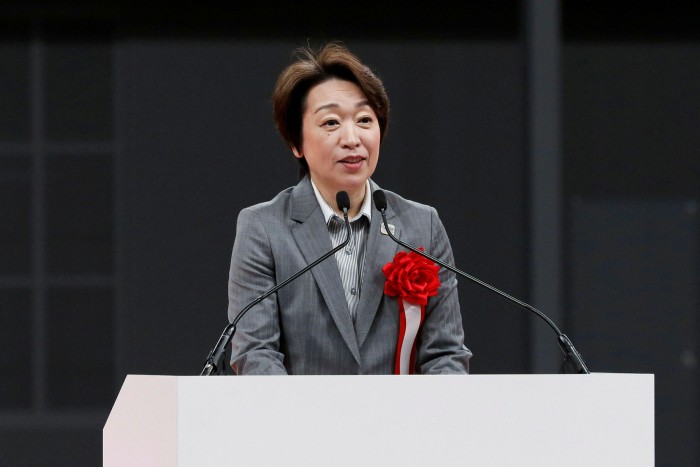Women in meetings should be heard as well as seen


Roula Khalaf, Editor of the FT, selects her favourite stories in this weekly newsletter.
When Yoshiro Mori, president of the Tokyo Olympics committee, complained last month that women did not belong on leadership committees because they talk too much, the global backlash was instant and unforgiving. Mori, a former prime minister of Japan, resigned and was replaced by Seiko Hashimoto, a female government minister and former Olympian.
Mori’s remarks were not only sexist, but factually incorrect. A much cited 1993 review of 56 studies of speaking patterns in meetings found only two showing that women talked more; 34 found men talked more — and in the remainder the sexes behaved similarly. More recent studies have found similar results.
But the episode highlights a challenge that employers worldwide are struggling with. Efforts to diversify leadership teams and workforces are finally bearing fruit. To benefit, however, companies must ensure that people with different perspectives are heeded, respected and retained rather than just present, resented or ignored.
This is particularly important right now. Years of progress toward improved gender and racial equity are under threat as women and ethnic minorities disproportionately bear the burden of helping their families cope with the Covid-19 pandemic. Unless employers find ways to make clear their contributions are valued — and update working practices to help them stay in the workforce — their participation is likely to fall.

First, the good news: all-male boards have disappeared from the FTSE 350 and those UK-listed companies have reached their collective target of having one in three directors be female. In the US, the share of women on Russell 3000 index boards has hit an all-time high of 22.6 per cent. In France, the world leader, research company BoardEx estimates that big company boards are 43.6 per cent female.
Corporate leaders now routinely seek a wide range of viewpoints and experiences. “Board diversity is not optional for me,” says Dame Louise Makin, newly appointed chair of Halma, the FTSE 100 maker of safety technologies. “It enhances performance and innovation, and ensures that our strategies are well informed and robust,”
But progress on executive leadership has been much slower — the executive committees of FTSE 350 companies are 21.5 per cent female, for example. And there is growing evidence that the challenges of working during Covid-19 have disproportionately affected women.
A McKinsey survey of 40,000 US workers at 47 companies found that one in four women was considering leaving the workforce or downshifting career because of the pandemic. That rose to one in three for mothers, nearly double the rate for fathers. Senior women were significantly more likely than senior men to report feeling burnt out, exhausted or pressured to work more.
Employers who want to retain these women and benefit from their expertise must act now, to address pandemic stresses and to make sure their contributions are welcomed. Employees already under personal strain are unlikely to want to fight to make themselves heard at work. They may instead drop out or change jobs.
While few people are as vocal as Mori, his resentment of contributions from women, and others he perceived as outsiders, is not uncommon.
Indeed, Lareina Yee, McKinsey’s chief diversity and inclusion officer, estimates that “anywhere from 10 to 30 per cent [of employees] are not on board with change, and many of them may be silent dissenters”.
Their discomfort may manifest itself in small acts of exclusion or disrespect. These “microaggressions” end up making the workplace uncomfortable for the kinds of new employees that companies are working to attract and retain.
Jennifer Howard-Grenville, professor at Cambridge Judge Business School, argues that top managers need to talk explicitly about how they plan to work together and get the benefit of different leadership and conversational styles.
Win a free place on an executive MBA

Essay competition: ‘How can organisations, policymakers and individuals encourage female participation at the top?’ More details available below this story
Drawing on research that suggests mixed gender teams improve performance, she says, “you want people who are socially focused and thinking about the community, and you also want people who will be assertive and raise challenging issues”. That requires an environment where people trust each other and feel comfortable expressing themselves.
The challenge for managers at all levels is to bring the resisters along, while not allowing them to derail the contributions of people they resent. That may simply involve making time to get to know — and to listen to — every member of a team. But it also means making a special effort to draw out introverts, welcome new colleagues and check in regularly with those who feel they are the “only” representative of their gender, race or other category.
Zoom calls and remote working have made it harder for people to develop the kinds of personal ties that allow for honest discussion. That puts the onus on team leaders. At the start of meetings, McKinsey’s Yee advises: “Don’t just say hi, say ‘how are you?’ — listen to the answers.”
If companies fail to do this, we may look on 2020 as a high water mark for diversity that will not come again for a very long time.
The writer is the FT’s chief business commentator
Comments